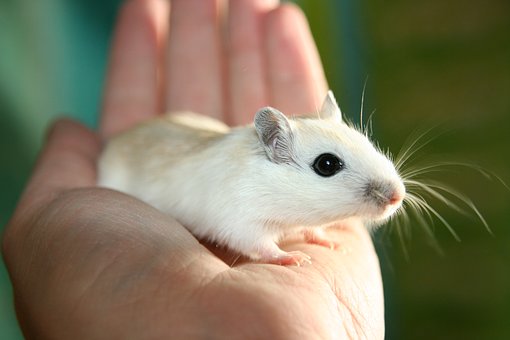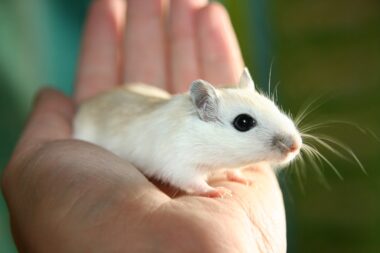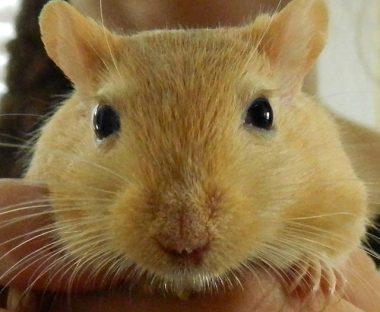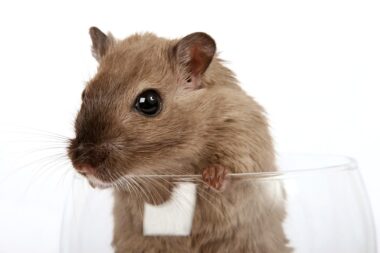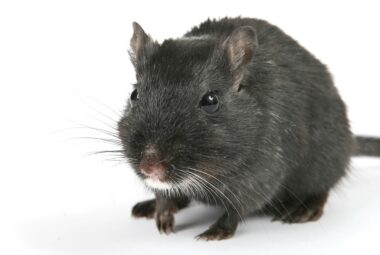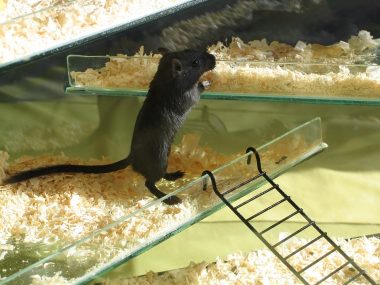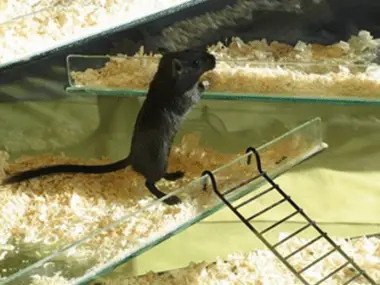Table of Contents Hide
Gerbils belong to the rodent family and usually found in Africa, Asia and India. They are very social and are curious by nature. What makes gerbils good pets is their size – they are small and fit in the palm of an adult’s hand. Unlike dogs, they don’t need to be walked every day. They make the perfect pet due to their size and lifespan. The average gerbil is 4 to 5 inches (ca. 13 cm) long when it is fully growth. Gerbils are herbivores and with good care, they can live for 5 years. Here is a list of things every new gerbil owner should have, so that they can take good care of their new friend.
Tips on how to care for a gerbil
Personality: Unlike other members of the rodent family, gerbils are very social and like company. Experts recommend buying two gerbils of the same sex so that they can keep each other company. The reason for this is to avoid a whole litter of babies and having to care for them if the gerbils are male and female. Solitary gerbils don’t live as long and could have weight problems.
Human interaction and socialization: Gerbils are very small and should be handled carefully. If your gerbil is your child’s pet, supervise your child’s interaction with it. When you bring a new gerbil or two home, spend time with them. Talk to the gerbil(s) to get them used to your voice and play with them. Wash your hands well before and after you play with a gerbil to avoid health issues. You can let them explore the house or a room with supervision. Your pets don’t always have to be confined to their little crates. While handling your gerbil, don’t touch their tail. This could cause injuries and the tail to break off. This is an essential tip to remember and know on the how to care for a gerbil list.
Where to house a gerbil: Gerbils can be housed in a fish tank. The reason not to choose a wood or metal cage is because gerbils like chewing. They could chew through a wood crate and frequent replacement may be necessary. Wire crates will injure them or result in cracked teeth for the gerbil. Since gerbils also like to dig, an aquarium is the best option as it is easy to put down plenty of bedding material. A rectangular 20-gallon aquarium is the ideal size and option. If you have the space, you could choose a larger aquarium to house your gerbils.
Other care requirements for a healthy gerbil
What to feed your gerbil: Check your local pet store for pre-mixed and packaged gerbil food. This food is balanced, with the right mix of fats and carbohydrates. If you want to make food at home, you can combine parrot food (seeds and nuts) with hamster food. Fresh fruit and vegetables can be offered occasionally as a supplement. Avoid lettuce as too much can cause diarrhea. Other foods that are good for your gerbil are peanuts, hard-boiled eggs, sunflower seeds, and a bit of cheese. Restrict frequency as these high fat foods result in extra weight.

Sufficient water: Gerbils living in the wild get enough water from their food. But pet gerbils on a pre-packaged food (dry) should be given access to a source of water. Buy a drip water bottle at the pet store and hang it up in their crate. It should be easily accessible and a drip bottle that works on gravity is the best. Change the water at least twice a week if you don’t want to do it every day. Clean the bottle often.
Bedding materials and cleaning up the cage: Of the different wood shavings, aspen shavings are the safest for gerbils.

You can find this at the pet store and add a thick layer at the bottom of the cage. Change it once a week if you have one gerbil. If you have two in one container, change it more often. This helps to remove their poop. Gerbils tend to use the same spot for their bathroom. Another thing to keep in mind – make sure the drip water bottle isn’t leaking. This can make the wood shavings wet and moldy. Scoop out the soiled bedding and replace every day. Clean the cage once a week by removing the gerbils and their toys. This is an essential step in the how to care for a gerbil manual and should not be neglected. Wash the cage with warm soap and water and let dry thoroughly. Put in fresh bedding material and the other items back in along with your little pets.
Finding the right toys and scheduling veterinary care
Accessories and toys for your pet: When you shop for toys and accessories for your gerbil, avoid flimsy plastic toys. Gerbil teeth grow very fast, and they like to gnaw on things to keep their teeth short. Plastic pieces can choke your gerbil. Get wood and ceramic toys so your gerbils can play and practice gnawing without injury. Ceramic flowerpots are a good place for sleeping and exploring. If you install a wood house with holes, they can play exploration games. Plastic tubing also offers good exploring and sleeping opportunities. A solid hamster wheel is another good toy to play with and get exercise.
Cardboard tubing is another favorite with gerbils. They can gnaw on these. Gerbils also like to climb and explore. Add ladders and tubes. These will provide endless hours of play and fun. You can also get them rope toys and supervise them while playing. Rope toys have to be replaced as they can present a choking hazard.
Doctor visits: Doctor visits: Like people and other pets, gerbils should also see a vet regularly. These checks will help your pets to stay healthy and live longer. After food, this is an important element on the how to care for a gerbil checklist.
Other things related to gerbil care one should know
· Gerbils are social animals and do well when they have company. If you are a new pet owner, consider getting two or more gerbils. It is a good idea to put a new gerbil in the same cage with a barrier. Once they make friends, you can remove the barrier. As a pet owner, you should take time to interact with your pet. That way he/she will get familiar with your voice and enjoy interacting with you. Handle the gerbil gently and use cupped hands to pick him/her up. Don’t touch the tail because it is very fragile and could break. Handling your gerbil will help you figure out if there are any health issues. You can take your pet to the vet if necessary.
· Gerbils like to dig and burrow. This is part of their nature. Make sure to add a lot of bedding – aspen shavings, a bit of straw or even shredded paper to their cage. This will keep them busy for a long time and help their digestive system. Straw is a good material as they can also eat it. Gerbils in the wild are active and providing them opportunities will help them stay healthy. They gnaw a lot too – look for gerbil friendly chew toys at the pet store. Consider adding new elements to their cage every time or changing items when you clean it out. Supervise them closely to see what they like and to keep an eye on their activities.
· Gerbils can be given some human food. Recommended items include bananas, apples, carrots, broccoli and peas. You can give them some nuts and hard cheese occasionally. Don’t change their diet drastically as it can cause stomach issues. Small amounts of fruits daily will add variety to the diet. Avoid foods like chocolate and candy. Onions and raw beans are also to be avoided. You can give them sugar-free cheerios and small chunks of whole wheat bread as treats.
· If you plan to buy wood toys or houses for your gerbil, make sure it is not painted or treated. Painted and treated wood is not good for them as they gnaw wood and could ingest it. It is fine to give them small, dry twigs to gnaw on. Hard dog treats like biscuits are also fine.
· Gerbils live for 4 or 5 years based on their overall health condition. Feeding them a good diet, interacting with them and regular vet visits will go a long way in keeping your gerbil healthy. If you see signs of health problems, take your gerbil to the doctor immediately. Like most other pets, make sure to set up an annual check-up schedule. Gerbils can and do get parasites like lice and fleas. Get them treated immediately so that these parasites don’t end up in your house.
Conclusion:
The above how to care for a gerbil checklist has all the information you need to take care of a new pet. After getting a gerbil, you can refer to this list or talk to your vet for help.
